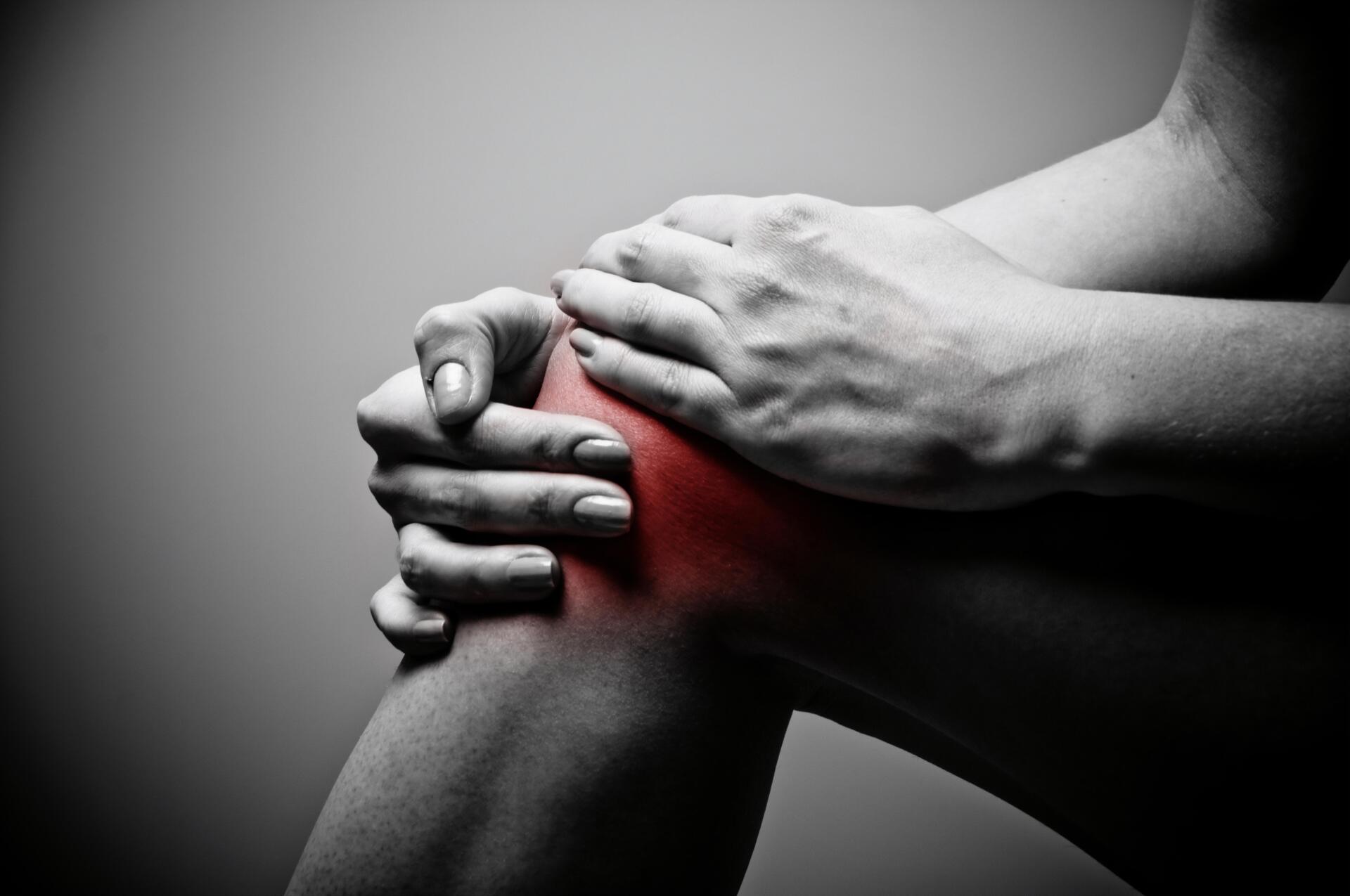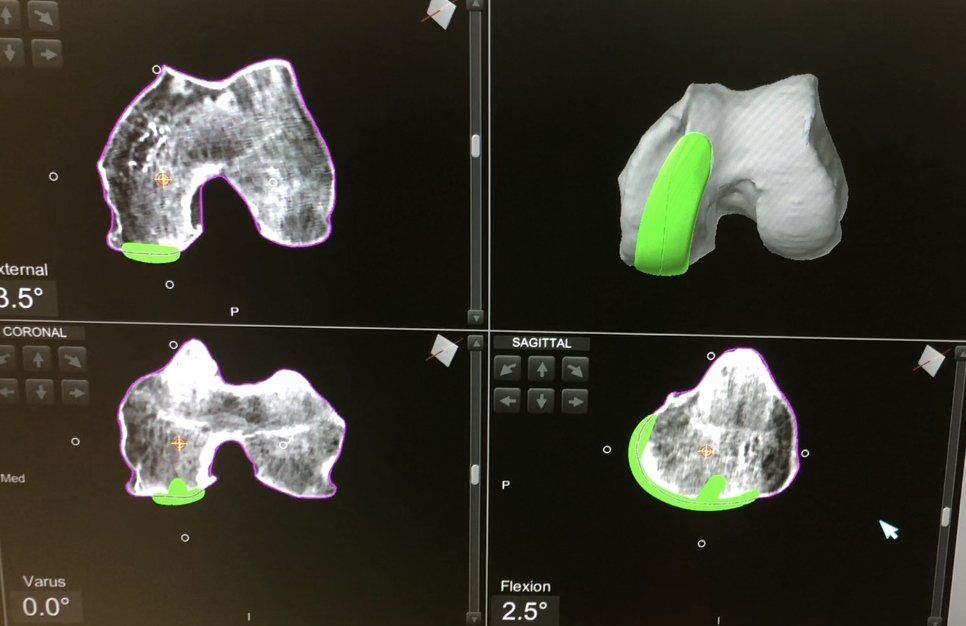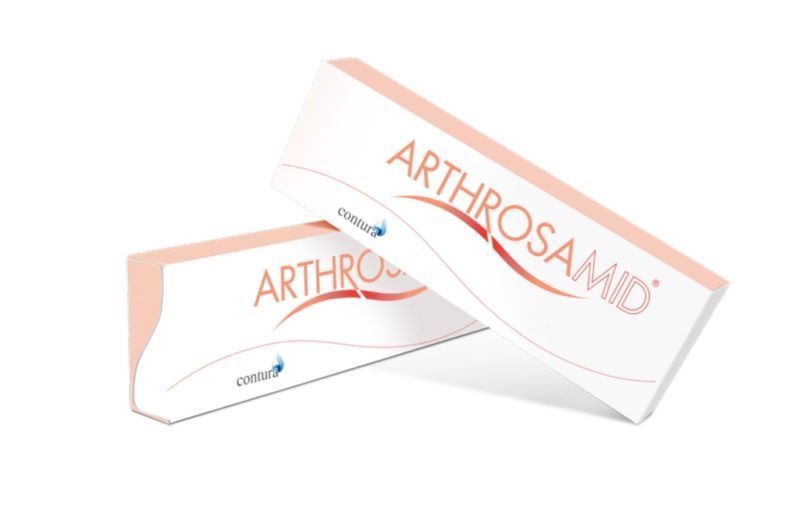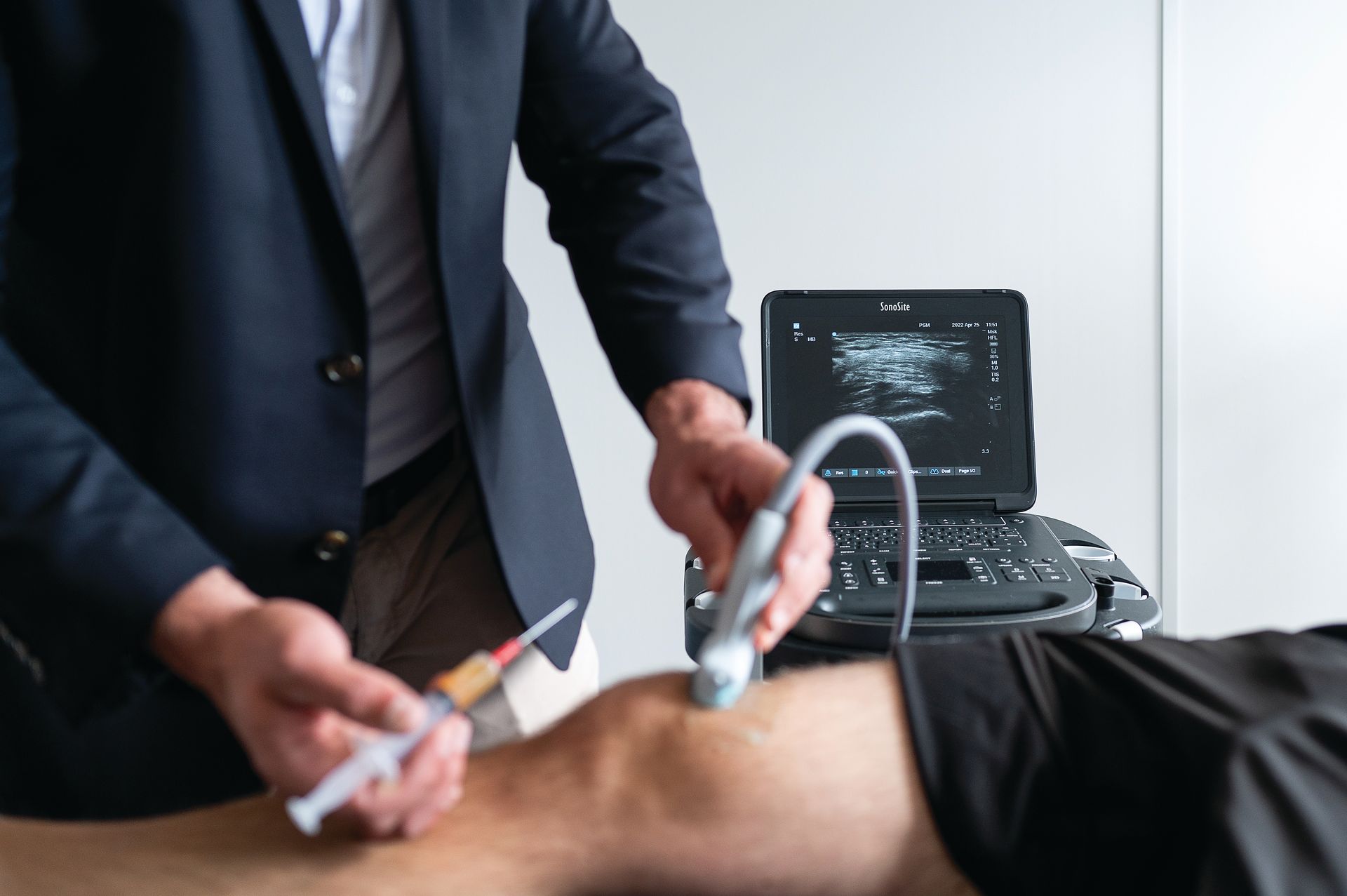
Robot Assisted Hip and Knee Replacements

What is a robot assisted joint replacement?
When joints such as the knee or hip become damaged due to arthritis or trauma, the best treatment option to improve pain and function may be to replace the joint. A joint replacement involves removing the surface of a damaged joint and replacing it with material such as titanium or cobalt chromium alloy. Traditionally a surgeon would use an X-ray and cutting guide placed on the bone to help cut the bone at the correct angle and depth.
Robotic technology now makes this process much more accurate, allowing surgeons to create a 3D model of the bone and use the robot to ensure the bone cuts are within a millimetre or half a degree from the pre-operative plan.
What are the surgical benefits?
The robotic system enables the surgeon to practice putting the joint replacement in the perfect position, even before the case has begun. The pre-operative scan allows the joint replacement to be placed in the optimal position for each individual patient and restores the alignment of the limb.
What are the benefits to the patient?
Robot assisted surgery allows:
· Smaller surgical wounds to be used (Minimally invasive surgery)
· Quicker return to function with most patients walking on the day of surgery
· Reduces the chance of damage to surrounding ligament, tendons, nerves and blood vessels
· Can improve long term function and reduce the risk of further surgery in the future
Are there any additional risks to using a robot?
Robotic Procedures take slightly longer than manual procedures but are not associated with any increased risks to the patient. Theoretically, the robot should decrease the chance of a surgical complication and has been shown to reduce the chance of readmission to the hospital after the operation. Recent studies have also suggested a lower 5 year revision rate, particularly for partial knee replacements.
Always discuss any concerns you have or questions about potential complications with your surgeon directly.
For videos, patient information or to book an appointment to discuss a robot assisted hip or knee replacement click the below links….
Robotic Assisted Partial Knee Replacement
Robotic Assisted Total Knee Replacement

